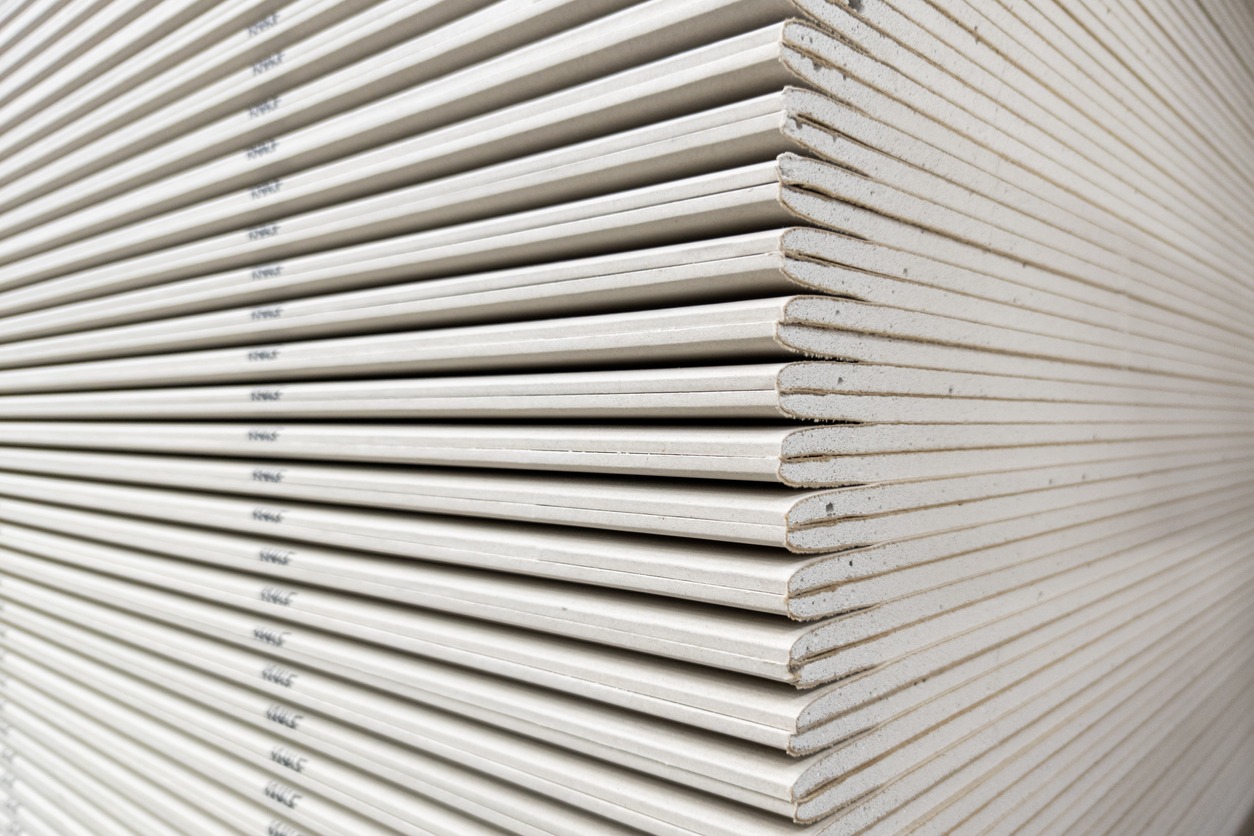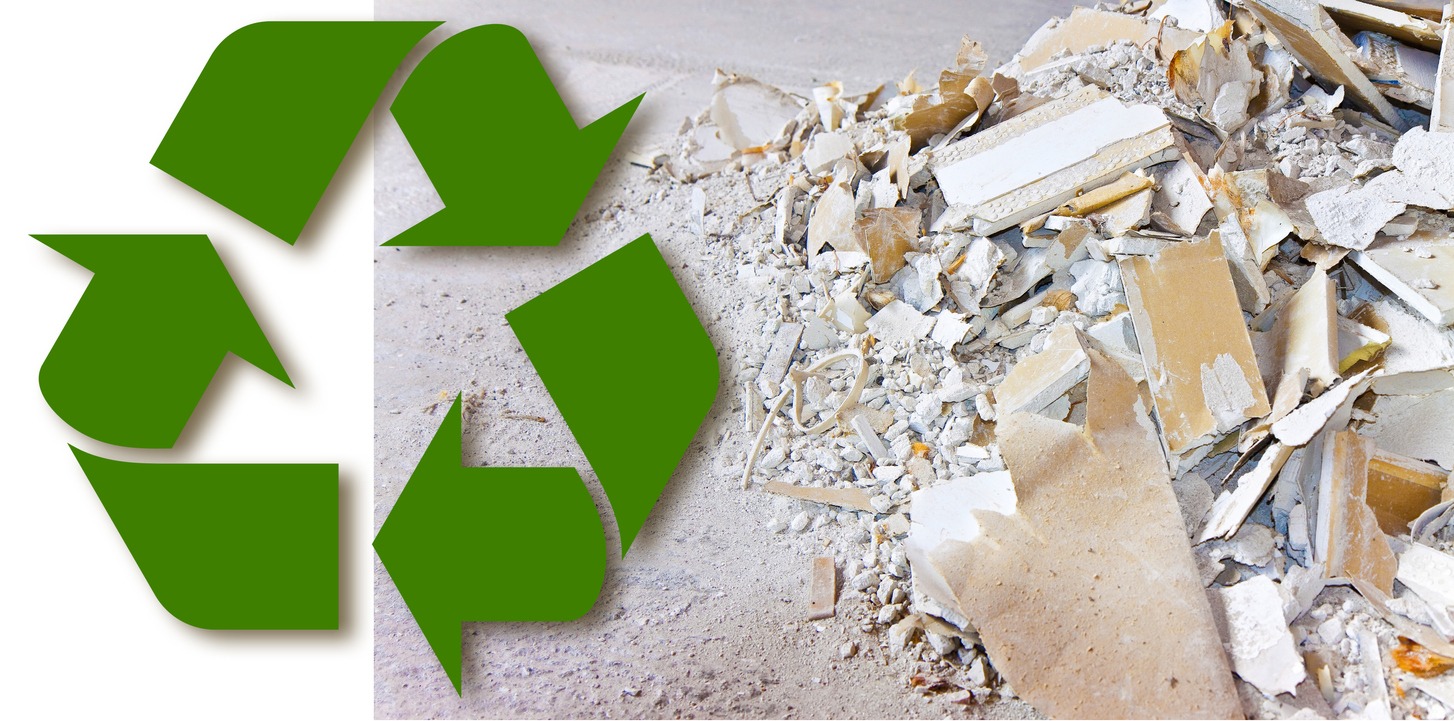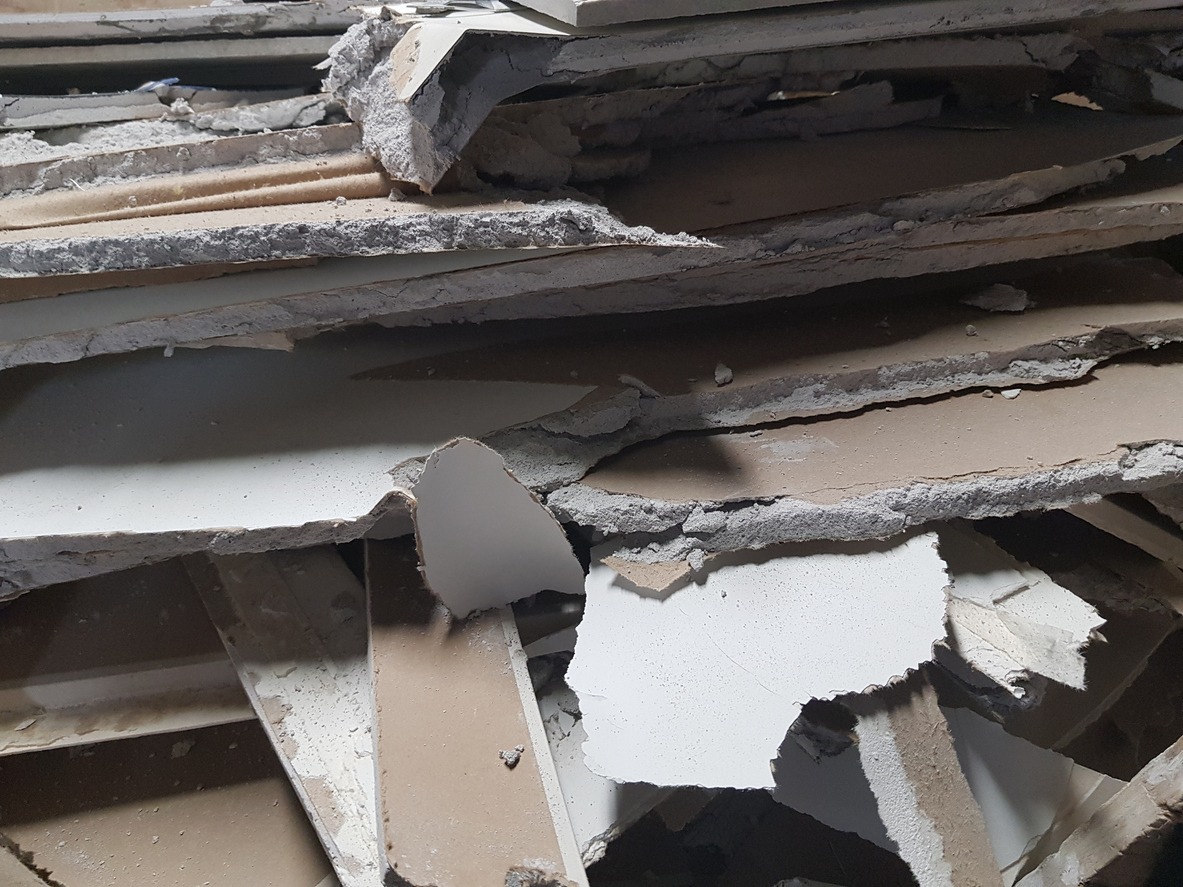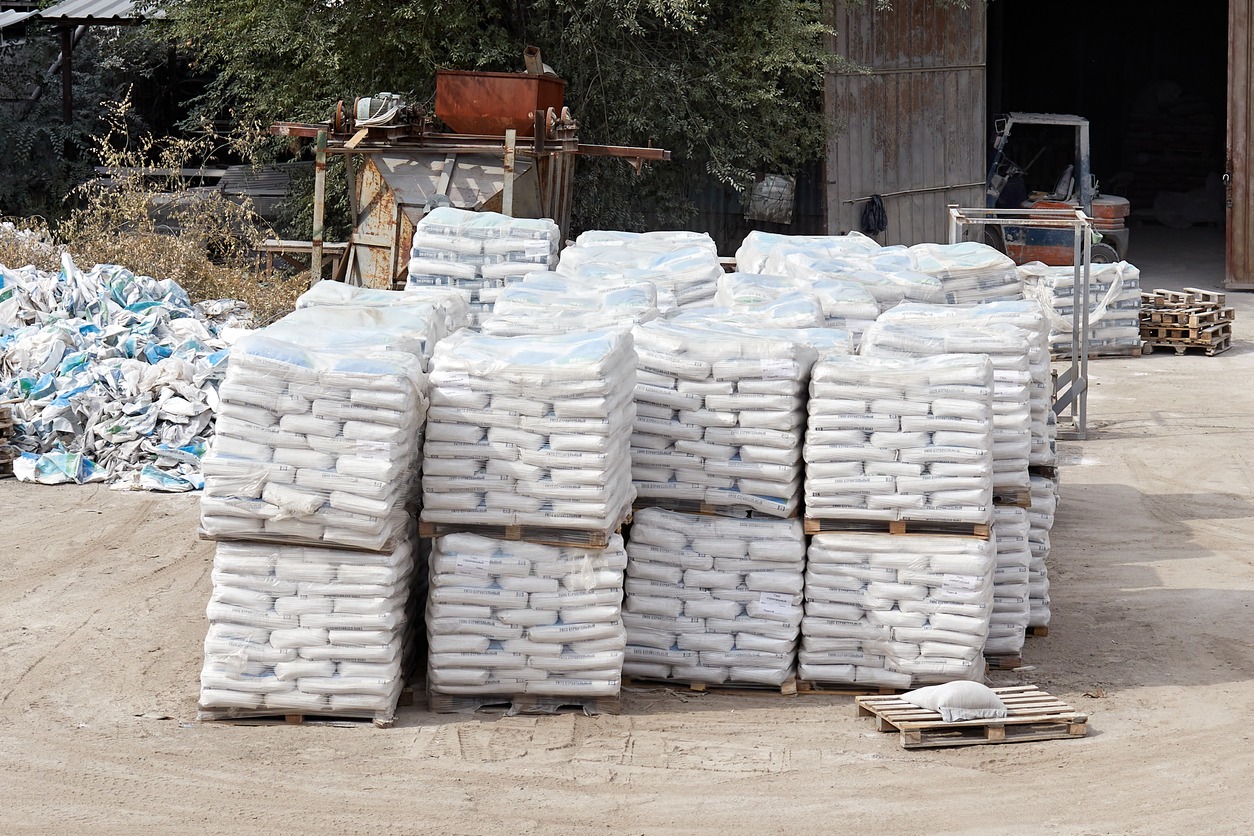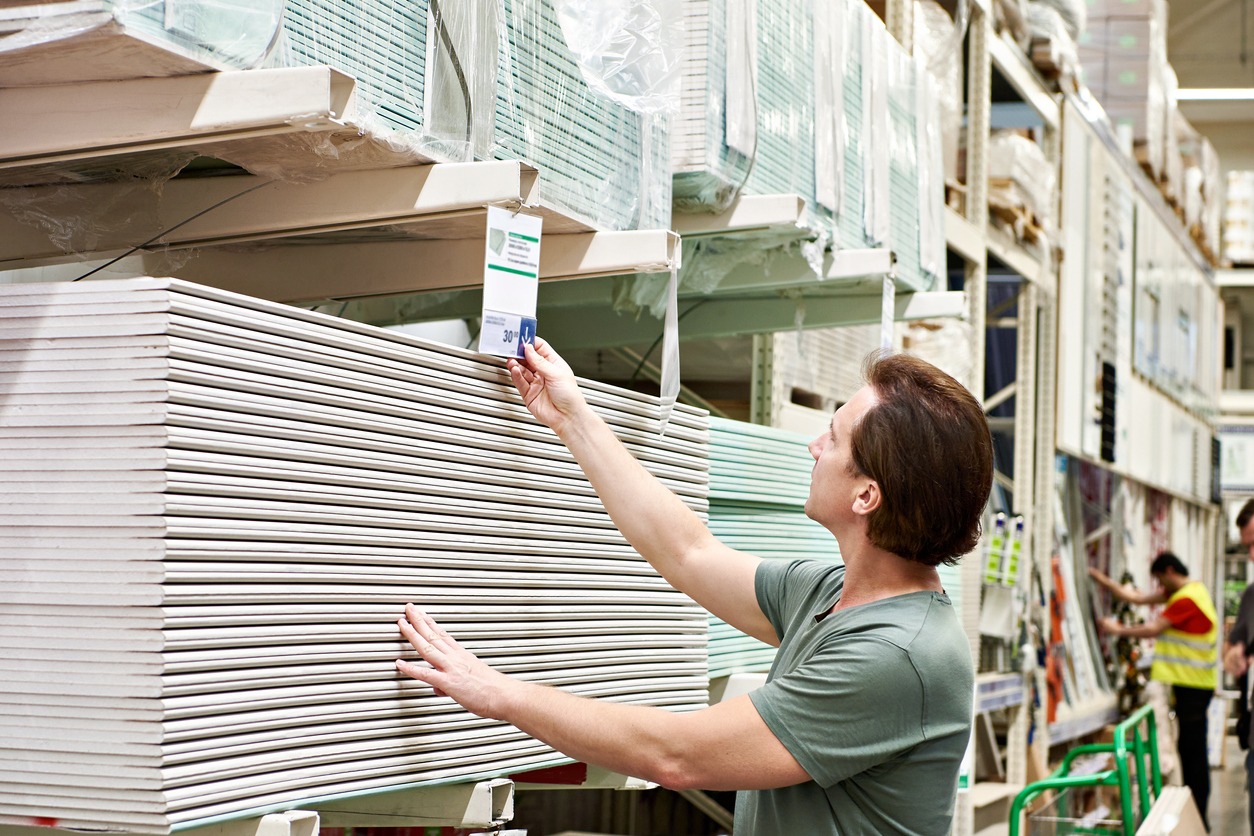Just as a butterfly’s wings can cause ripples around the world, the production of drywall has far-reaching environmental implications that you may not initially consider. From the extraction of raw materials to the manufacturing process, each step has its unique challenges and opportunities for sustainable practices. You’re probably aware that recycling plays a pivotal role in mitigating the environmental impacts of drywall waste, but you might not know the full extent of its benefits or the innovative approaches taken by facilities across North America. Let’s explore how the drywall industry is pushing the boundaries of sustainability and why this matters for the planet.
Raw Materials Extraction
The extraction of gypsum, a key raw material for drywall, involves significant environmental considerations. When you explore the process of obtaining gypsum for drywall, you’re looking at open-pit mining and quarrying techniques that have a considerable footprint. The initial steps, which include blasting, crushing, and grinding the mineral into a powder, are intensive and can disrupt local ecosystems. You’re facing habitat destruction, a concern for biodiversity, and potential water contamination issues that stem from the mining activities.
However, it’s not all grim. Sustainable practices in gypsum extraction are gaining traction, aiming to minimize these environmental impacts. Efforts to reduce habitat disruption during extraction and to rehabilitate land post-mining are key. You’ll find that responsible sourcing initiatives are increasingly important in the drywall industry. These initiatives aren’t just about ensuring ethical extraction practices; they’re also about reducing the negative effects on the environment. As you consider the journey of gypsum from the earth to your walls, it’s clear that the environmental considerations are as layered as the drywall itself.
Drywall Manufacturing Process
You’ll find that the drywall manufacturing process begins with careful raw materials selection, ensuring quality and sustainability from the start. Next, the production line steps transform gypsum into drywall through a series of precise operations, focusing on efficiency and minimal waste. Finally, waste reduction techniques play a key role, recycling materials back into the process and greatly lowering the environmental footprint.
Raw Materials Selection
When selecting raw materials for drywall manufacturing, it is important to take into account gypsum, recycled paper facings, and specific additives like starch and fiberglass for their roles in improving strength, fire resistance, and durability. Here’s why these components matter:
- Gypsum provides the core material, offering a balance between durability and ease of installation.
- Recycled paper facings support sustainability by reducing waste and enhancing the product’s fire-resistant properties.
- Starch serves as an adhesive, improving the bond between the gypsum core and paper facings.
- Fiberglass adds to the overall strength and durability, making drywall more resistant to impacts and wear.
Emphasizing these materials not only guarantees a high-quality product but also underscores the commitment to recycling and minimizing waste in the production process.
Production Line Steps
Drywall manufacturing starts by blending gypsum, water, and specific additives into a slurry, setting the stage for the creation of this essential building material. You’ll see this mixture poured between two layers of paper, then pressed to craft the drywall panel. Next, the panels are cut to size, dried out, and finished with beveled edges, making them ready for the construction and demolition world. It’s important to note that producing drywall emits carbon dioxide due to the calcination of gypsum. But, there’s a silver lining. Sustainable practices are in play, aiming to cut down energy use and waste. This includes integrating recycled materials into production, showing a commitment to not just build but rebuild responsibly.
Waste Reduction Techniques
After exploring the basic steps of drywall production, let’s focus on how manufacturers are cutting down on waste through various techniques. In the face of mounting construction and demolition debris, adopting waste reduction techniques is important. Here’s how they’re doing it:
- Optimizing cutting patterns to minimize scrap, ensuring materials are used efficiently.
- Implementing efficient material handling and production planning processes, reducing unnecessary waste.
- Upgrading equipment for precision cutting, which directly lowers material waste.
- Utilizing recycled gypsum in the production process, reducing the environmental impact.
Environmental Impacts
Considering the important role that drywall manufacturing plays in environmental degradation, it’s crucial to understand its impacts. This process contributes notably to air pollution, releasing sulfur dioxide during gypsum processing. This isn’t just a minor inconvenience; it’s a major environmental concern, as sulfur dioxide has harmful effects on both the air quality and the broader ecosystem.
Furthermore, when you think about the end of a drywall’s life, typically during construction and demolition, the environmental implications become even more pronounced. Disposing of drywall waste in landfills isn’t a benign act. It leads to the production of hydrogen sulfide gas, a potent pollutant that poses serious environmental hazards. This reality underscores the critical need for recycling initiatives. By recycling drywall, you’re not just reducing the demand for virgin gypsum; you’re conserving natural resources and notably lowering the environmental impact. Recognizing these issues, some regions have taken proactive steps by banning drywall disposal in landfills. These bans aim to mitigate the generation of hydrogen sulfide gas and encourage more sustainable waste management practices, making recycling a key component in the fight against environmental degradation.
Sustainable Practices Adopted
Acknowledging the environmental downsides, manufacturers have begun implementing sustainable practices in drywall production. This shift toward sustainability aims to address the concerns associated with the construction and demolition sector, particularly regarding waste and energy consumption.
To make a notable impact, drywall manufacturers are focusing on several key areas:
- Use of Recycled Materials: By incorporating recycled content from construction and demolition waste, manufacturers are not only reducing the demand for virgin resources but are also supporting the circular economy.
- Optimizing Energy Efficiency: The adoption of energy-efficient technologies, like advanced kiln systems, helps in significantly lowering the carbon footprint of drywall manufacturing processes.
- Minimizing Waste Generation: Through process optimization and better material handling, manufacturers are able to reduce the amount of waste produced during production.
- Lowering Greenhouse Gas Emissions: Sustainable practices, including the use of optimized transportation methods, contribute to the reduction of greenhouse gas emissions associated with drywall manufacturing.
Recycling Drywall Waste
You might wonder where all the drywall waste comes from and how it’s handled. The recycling process for drywall is not only intricate but essential for meeting the strict purity standards required by the end markets. By understanding the sources of drywall waste, how it’s recycled, and the benefits of this process, you’re taking a step toward promoting environmental sustainability.
Drywall Waste Sources
When tackling the issue of drywall waste, it is important to emphasize that sources such as construction sites, renovation projects, and demolition activities contribute greatly to the over 12 million tons generated annually in the U.S. Drywall waste, including scraps, offcuts, and damaged panels, greatly adds to this volume. Fortunately, recycling programs offer a pathway to mitigate this environmental challenge.
Consider the primary sources of drywall waste:
- Construction sites: New builds often have surplus materials.
- Renovation projects: Updating spaces generates considerable waste.
- Demolition activities: Tearing down structures contributes heavily.
- Damaged panels: Mishandling and transport accidents add to waste.
Recycling Process Explained
Drywall recycling kicks off with the collection and transport of scrap materials to facilities specializing in their reprocessing. Once there, the scrap drywall undergoes sorting to remove impurities, making sure only the gypsum core makes it through to the next stage. This meticulous process is important as recycled gypsum must meet strict purity standards, especially if it’s headed back into drywall manufacturing or used as a soil amendment. Facilities like NWGR and Recycle Gypse Quebec in Canada, along with USA Gypsum and Gypsum Agri-Cycle in the US, are at the forefront of accepting various drywall scraps for recycling. Their efforts guarantee that drywall waste is transformed efficiently, reducing the environmental impact greatly by avoiding the production of harmful gases like hydrogen sulphide during landfill disposal.
Benefits of Recycling
Recycling your drywall waste greatly reduces the production of harmful gases like hydrogen sulphide and sulphur dioxide. Facilities across North America, including NWGR and USA Gypsum, are equipped to process this waste, turning it back into useful materials. This practice not only lessens environmental harm but also contributes to the circular economy.
Here are four key benefits of recycling drywall waste:
- Mitigates Environmental Issues: Prevents the generation of hazardous gases.
- Supports Circular Economy: Recycled gypsum can be used to manufacture new drywall.
- Reduces Landfill Use: With bans in place, recycling offers an alternative to landfill disposal.
- Economic Viability: The demand for recycled gypsum in C&D and soil amendment markets makes recycling economically feasible.
Recycled Gypsum Markets
Exploring the markets for repurposed gypsum reveals a growing demand, particularly in sectors such as drywall manufacturing and soil amendment, where sustainability is increasingly valued. You’ll find that the construction and demolition industries are turning more towards drywall recycling to meet this demand, leveraging the benefits of repurposed gypsum. It’s not only cost-effective but also aligns with the push for more environmentally friendly building materials.
Repurposed gypsum’s journey from waste to a valuable resource is fascinating. Facilities like NWGR and Recycle Gypse Quebec in Canada, along with USA Gypsum and Gypsum Agri-Cycle in the US, are at the forefront, processing gypsum waste into usable products. These facilities underscore the importance of recycling in the circular economy, ensuring that gypsum waste finds its way back into useful applications.
Here’s a glance at where repurposed gypsum makes an impact:
| Sector | Application | Benefit |
|---|---|---|
| Drywall Manufacturing | New Drywall Production | Reduces waste, lowers manufacturing costs |
| Agriculture | Soil Amendment | Improves soil structure, adds nutrients |
| Construction | Green Building Materials | Lessens environmental footprint, promotes sustainability |
This table highlights the diverse applications of repurposed gypsum, showcasing its crucial role in promoting sustainability across various industries.
Composting With Drywall
Building on the versatility of repurposed gypsum, it’s remarkable that composting efforts also benefit greatly from incorporating drywall. When you’re looking into composting and recycling, understanding how drywall can play a pivotal role in this sustainable practice is important. Not only does it reduce waste headed for landfills, but it also enhances the composting process in several key ways.
Consider these benefits of adding drywall to your compost:
- Improves Soil Structure: Drywall, when used as a compost-bulking material, enhances the physical structure of the soil.
- Acts as a Compost-Bulking Agent: Specifically, the gypsum from recycled drywall serves as an effective agent for bulking up organic waste, making the composting process more efficient.
- Nutrient Retention: Incorporating drywall into compost helps in retaining essential nutrients, which are important for plant growth.
- Promotes Microbial Activity: The presence of gypsum in compost fosters microbial activity, essential for breaking down organic matter.
Future Sustainability Trends
As we look toward the future, sustainable drywall manufacturing is set to revolutionize the industry by dramatically reducing environmental impacts. You’ll see trends like slashing water usage by up to 95% and turning to recycled paper and synthetic gypsum. These steps won’t just trim down the resource footprint; they’re reshaping how construction and demolition waste is managed through recycling.
Expect energy consumption during production to drop by 25% and CO2 emissions to markedly decrease. Innovations aren’t stopping there. The industry is exploring bio-based binders and alternative raw materials, minimizing the environmental toll even further. You’ll witness the implementation of closed-loop systems, ensuring manufacturing waste doesn’t end up in landfills but instead gets recycled back into the production process.
Future practices also focus on enhancing the durability of drywall. This move not only extends the lifecycle of the product but also promotes the principles of a circular economy. Plus, there’s a push for increasing transparency in material sourcing, letting you know exactly what’s in your walls. These trends are setting the stage for a more sustainable, eco-friendly approach to drywall manufacturing, aligning perfectly with the growing demand for greener construction solutions.
Eco-friendly Consumer Choices
When choosing drywall, you can noticeably reduce your environmental impact by selecting options with recycled content. This not only diverts waste from landfills but also lessens the demand for virgin materials, greatly lowering the environmental footprint of your construction or renovation project. Sustainable practices in drywall manufacturing and usage are vital for mitigating the adverse effects of construction and demolition on our planet.
To make eco-friendly choices in your drywall purchases, consider the following:
- Opt for recycled gypsum content: This helps in minimizing the extraction of virgin materials and supports recycling efforts.
- Look for green certifications: Products certified by reputable environmental organizations assure that you’re supporting companies committed to sustainable practices.
- Select low-VOC products: Choosing drywall that emits fewer volatile organic compounds improves indoor air quality and contributes to a healthier environment.
- Prioritize minimal packaging and efficient transportation: Reducing excess packaging and supporting companies with efficient logistics can further decrease the carbon footprint of your construction materials.
Conclusion
As you’ve seen, drywall manufacturing isn’t just about creating building materials; it’s also about making responsible choices. From reducing waste in extraction to adopting sustainable practices and recycling, every step counts towards minimizing environmental impacts. Facilities across North America are leading by example, showing that recycled gypsum can find new life in various markets. Looking ahead, embracing eco-friendly choices and supporting composting efforts can further enhance sustainability. It’s clear that a greener future in drywall production is not only possible but essential.

